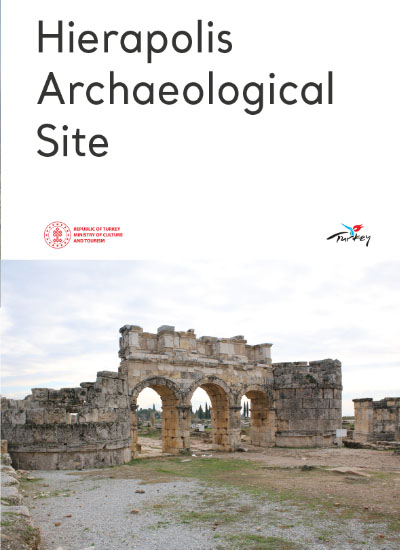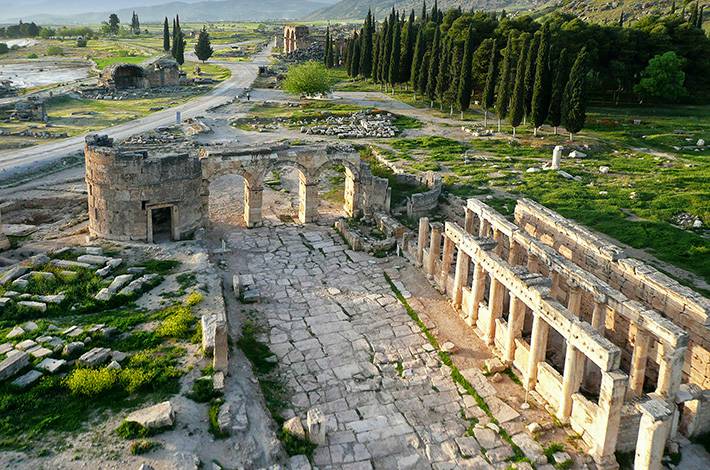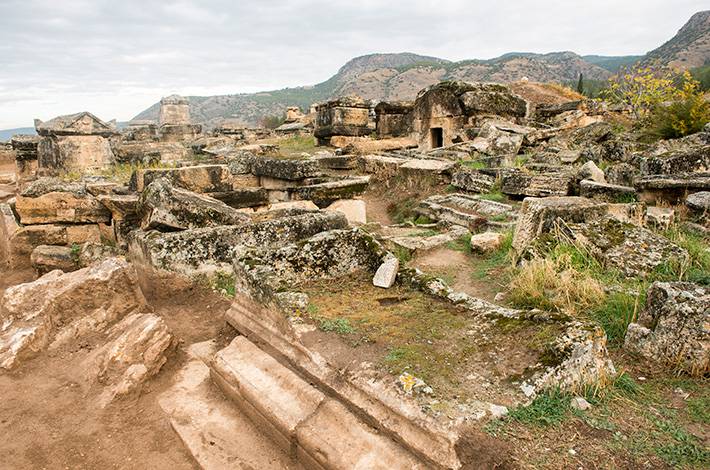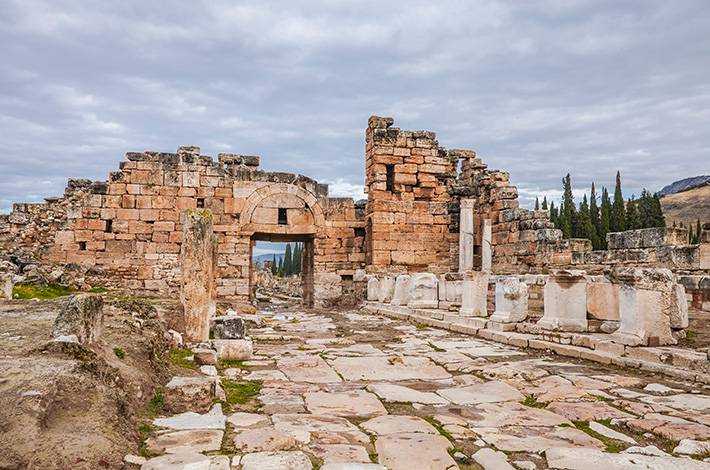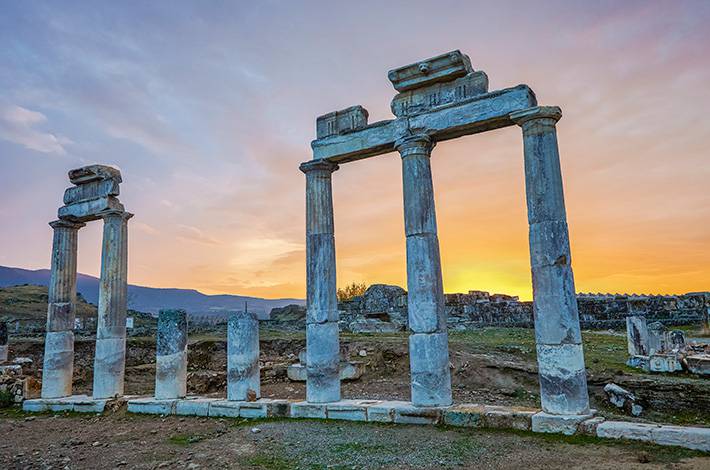Hierapolis is an ancient city situated 18 km north of Denizli. It was founded by Eumenes II, the King of Pergamon in the 2nd century BC. The name of the city is derived from Hiera, the wife of Telephos, the legendary founder of Pergamon. Throughout antiquity, the city was repeatedly destroyed and rebuilt by earthquakes. The buildings that remain standing today were constructed after the great earthquake in AD 60. Following the earthquake, the city was reconstructed with a grid plan, resembling a typical Roman city. Hierapolis maintained its significance during the Byzantine era, becoming a centre of Christianity from the 4th century AD onwards, due to the crucifixion of St. Philip, one of Jesus' disciples, in AD 80. Upon its conquest by Byzantine forces in the 4th century, a Martyrium, an octagonal church, was erected in memory of St. Philip. The city was awarded the title 'Metropolis' after gaining fame. However, it was destroyed again by an earthquake in the 7th century AD. During the 13th century, it was a small town under the dominance of the Seljuk Sultanate. After another earthquake in the 14th century, the city was completely abandoned. The ancient city had a grid plan consisting of two monumental gates and perpendicular streets parallel to the main street, which is approximately 1 km long and divides the city into two parts. On both sides of this street, there are arcades, public buildings, shops, and workshops. The necropolis areas, which are located outside the city walls and on the north, south, and east sides of the city, constitute the largest necropolis in Southwest Anatolia. The ancient city of Hierapolis boasts several significant buildings, including the Basilical Bath, Latrina, Theater, Plutonium (a shrine dedicated to the God Pluto), Apollon Temple, water canals, The Nymphaeum, and churches such as St. Philip Martyrium and St. Philip Church. Additionally, there is an antique pool and baths. Hierapolis, along with the splendid Pamukkale Travertines next to it, has been included in the UNESCO World Heritage list as a cultural and natural heritage site. While You Are Here… The white travertine's natural wonders should not be missed. These thermal pools with terraces have been attracting people seeking beauty and health since the Roman era.
HIERAPOLIS SITE

